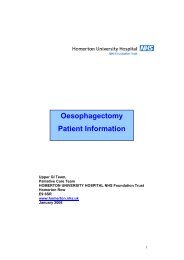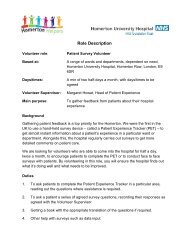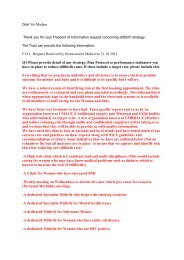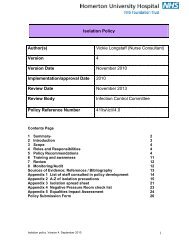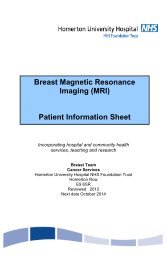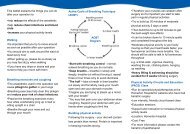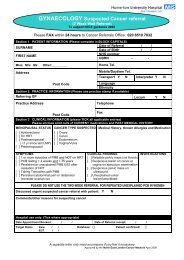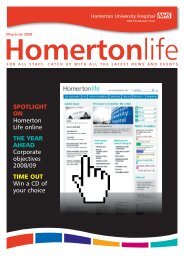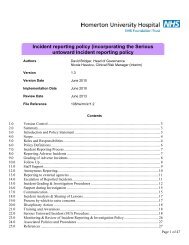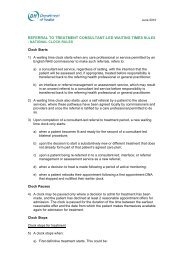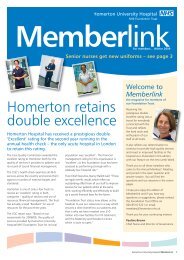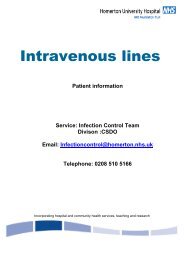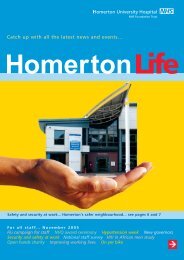Children & Young People's Services Resource guide for professionals
Children & Young People's Services Resource guide for professionals
Children & Young People's Services Resource guide for professionals
Create successful ePaper yourself
Turn your PDF publications into a flip-book with our unique Google optimized e-Paper software.
2.1 Agreed Definitions <strong>for</strong> Hackney Child Wellbeing FrameworkThe Hackney Child Wellbeing Framework is a development of the Child Wellbeing Model that wasintroduced in 2009. The model has been praised by several Ofsted inspections which noted that itwas well understood and used across agencies within <strong>Children</strong>’s <strong>Services</strong>.The Model was refreshed in 2012 to reflect improvements in partnership working and place moreemphasis upon the role of all services in identifying need and promoting the wellbeing of childrenand families.The Hackney Child Wellbeing Framework focuses upon child and family need; not thresholds <strong>for</strong>services.It does, however, attempt to give an indication of what might be an appropriate approach toresponding to need by defining three levels:• Universal - a response by universal services, often working individually• Universal and Universal Partnership Plus - a response by universal services working togetherin universal settings and sometimes bringing additional targeted resources into a multi agencypartnership plan• Complex/high risk – a response that requires high level Specialist <strong>Services</strong>, often governed bystatutory frameworks, to take the lead role.Universal services that meet universal need include schools, <strong>Children</strong>’s Centres, health visiting,school nursing, GPs, play services, <strong>Young</strong> Hackney, police, housing and the voluntary and communitysector.Some of the targeted services that can support universal services include family support services,First Steps, <strong>Young</strong> Hackney, SEN, behaviour and educational support, speech and language therapy,short breaks and Transition, and voluntary and community services.When needs are sufficiently intense or numerous to require a Universal Plus or Universal PartnershipPlus response, this will often require a written plan as part of the Common Support Framework, KeyWorker Action Plan (step across) or an Initial Assessment (step down) so that the family and allworkers involved are aware what outcomes we hope to achieve, who is responsible <strong>for</strong> the actions toachieve them and how we will know when we are successful.When children and families have complex needs or are high risk, specialist support will sometimesbe provided by <strong>Children</strong>’s Social Care. This is indicated in the table by using a bold typeface. Theseare often situations where the child is at risk because of deficits in parenting or carer capacity. Otherspecialist services include <strong>Young</strong> Hackney, Child and Adolescent Mental Health teams and specialistDisability <strong>Services</strong> (social care and/or health). Thre is also a complex care nursing team.The pathway and processes <strong>for</strong> responding to need are described in the <strong>Resource</strong> Guide.It is important to remember that each child and family will have a unique setof needs and strengths. The Child Wellbeing Framework is a <strong>guide</strong> and is notintended to replace professional knowledge, experience and discretion.<strong>Resource</strong> Guide <strong>for</strong> <strong>professionals</strong> | Updated January 2013 5



